Even with keyboards and screens everywhere, handwriting offers unique benefits that typing can’t match. Here’s why you should pick up a pen more often:
Handwriting isn’t just about putting words on paper – it’s a skill that supports learning, creativity, and emotional well-being. Start small, practice regularly, and enjoy the benefits of this timeless art.
Handwriting goes beyond just putting words on paper – it taps into unique cognitive and emotional advantages.
Writing by hand can significantly improve your ability to learn and remember information. Research from the University of Tokyo reveals that handwriting improves recall by 25% by activating multiple areas of the brain.
"There’s something about engaging the fine motor system and production activities that really impacts learning".
This process doesn’t just help with memory – it also encourages clearer, more organized thinking.
Handwriting can bring a surprising level of mental clarity. Professor Audrey van der Meer from the Norwegian University of Science and Technology discovered that:
"The most surprising thing was that the whole brain was active when they were writing by hand, [while] much smaller areas were active when they were typewriting".
Additionally, an 8-week study on Chinese calligraphy demonstrated that handwriting can reduce stress. Participants experienced lower heart rates, less muscle tension, and improved breathing patterns. Writing by hand offers a natural way to calm the mind.
Handwriting isn’t just a tool for learning – it’s a practical skill that enhances everyday activities. Physical note-taking, for example, helps with spatial memory, making it easier to remember where information is located on a page. This advantage can improve various tasks like:
| Activity | Benefit |
|---|---|
| Meeting Notes | Better information retention and recall |
| Study Sessions | Improved understanding through active engagement |
| Problem Solving | Greater focus and mental involvement |
| Stress Management | Lower anxiety through thoughtful writing |
"Holding a pen with our fingers, pressing it on a surface, and moving our hands to create letters and words is a complex cognitive-motor skill that requires a lot of our attention… This deeper level of processing, which involves mapping sounds to letter formations, has been shown to support reading and spelling in children".
Handwriting doesn’t just connect your thoughts to paper – it connects your mind and body in a way that typing simply can’t match.
The pen you use can make a huge difference in your handwriting. Different pens suit different writing styles and needs, so picking the right one is key.
| Pen Type | Best For | Key Features |
|---|---|---|
| Gel | Print writing | Smooth ink flow, variety of colors |
| Rollerball | Cursive writing | Requires little pressure |
| Ballpoint | Fast writing | Dries quickly |
| Fine-tip | Small handwriting | Offers precise control |
For instance, the Zebra Sarasa Dry Gel Pen dries ink 85% faster than typical gel pens, making it a favorite for clean, smudge-free writing. If you’re after something more premium, the Waterman Hemisphere Black Ballpoint Pen, priced at $69.99, provides great balance and comfort for extended writing sessions.
Once you’ve got the right tools, it’s time to focus on technique. Start by sitting with your feet flat on the ground and your back straight. Hold the pen using a tripod grip, where the pen rests between your thumb, index, and middle fingers.
Here are some tips to improve your form:
These small adjustments can make writing easier and more enjoyable.
Improving handwriting takes practice, and having the right materials can make the process much smoother. Sites like WorksheetWorks.com provide customizable practice sheets, while Channie’s Visual Handwriting Practice Workbook (priced at $18.65) uses color-coded blocks to help with letter sizing and spacing.
When practicing, try the following:
"Good handwriting is a worthy investment and sourcing the best pens is a big step in the right direction".
Adding handwriting to your planning routine can deepen your personal connection to the process while sparking creativity.
Using handwriting in planners like bullet journals or Hobonichi combines function and creativity. Each entry becomes a tool for staying organized while expressing your personality.
| Planning Element | Handwriting Style | Purpose |
|---|---|---|
| Headers | Bold lettering | Organizes sections visually |
| Daily tasks | Clear print | Easy to scan quickly |
| Reflections | Cursive | Adds a personal touch |
| Trackers | Neat print | Maximizes space |
"One of the rules I’ve given myself using a Hobonichi planner is that THERE ARE NO RULES"
This open-ended approach lets you create a system that’s uniquely yours while staying functional.
Digital tools are great for reminders and sharing schedules, but handwriting enhances memory and creativity. Combining both can give you the best of both worlds.
"…the easiest and most ubiquitous way to get stuff out of your head is pen and paper"

Want to make your planner visually appealing? Dark Moon Paper offers themed sticker sets like "Lilac Dusk" and "Winter Hygge" that pair beautifully with handwritten entries, adding a polished look.
Tips for enhancing your planner:
Blending clean handwriting with creative decoration makes your planner both useful and uniquely yours.
Handwriting can boost both organization and creativity. Studies show it activates cognitive processes that typing simply doesn’t engage.
To start building a handwriting habit, focus on having the right tools and setup. Find a pen that feels comfortable and suits your style – some popular choices include the Muji 0.38 mm pen for precision or the Pilot Falcon fountain pen for its smooth flow. Your workspace matters, too. A sturdy desk and properly positioned paper can make a big difference in your writing experience. These small adjustments lay the groundwork for consistent practice and steady improvement.
"To achieve neat, legible handwriting, there are three main tips to keep in mind: slow down, aim for consistency in your letter forms, and practice." – Dee Quine, Planning Enthusiast
Add quick, focused exercises into your daily routine:
| Time of Day | Writing Activity | Purpose |
|---|---|---|
| Morning | 5-minute warm-up drills | Build muscle memory |
| Mid-day | Handwritten to-do lists | Reinforce task retention |
| Evening | Gratitude journaling | Encourage self-reflection |
Dedicate 10-15 minutes a day to refining your handwriting. Focus on evaluating your letter forms, keeping a relaxed grip, and maintaining good posture to avoid hand strain. These small efforts can lead to noticeable improvements over time.
For a balanced approach, combine handwriting with digital tools. Use handwriting for personal reflections, brainstorming, and important notes, while relying on digital systems for tasks like scheduling and document sharing.
Writing by hand offers a tactile connection that screens can’t replace. As you practice regularly, prioritize clarity over perfection. Over time, your handwriting will naturally develop into a style that’s uniquely yours – clear, personal, and purposeful.
Stickers Made for Planning
Our custom stickers are a fuss-free way to brighten up your planner pages with perfectly-sized designs that add a spark of personality to every layout.
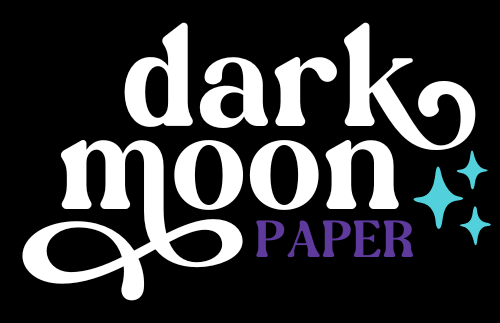
Why use planner stickers?
Planner stickers make organizing easy, fun, and personal! Add color, creativity, and structure to every page, transforming your planner into a tool that reflects you. Perfect for tracking, decorating, and staying inspired daily!
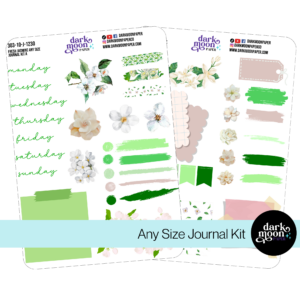
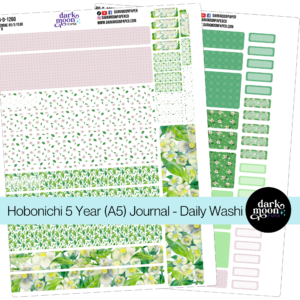
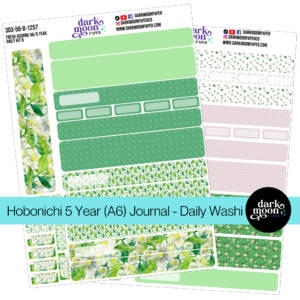
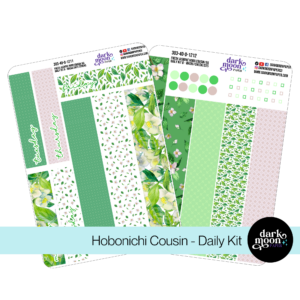

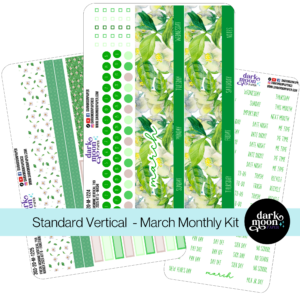

Hello and welcome!
I’m Rachael Snow, a lifelong artist and entrepreneur, and I started Dark Moon Paper to blend my love of art, technology, and the mysterious beauty of the world around us. My sticker kits are meant to set the mood, tell a story, and give you a little escape from the ordinary.
I work from my cozy studio tucked away in the beautiful woods of Oregon, surrounded by nature and a dark night sky full of stars.